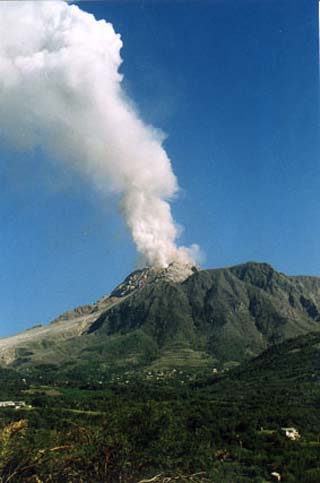
Paul Bell, whom I have known since the Peace Corps in the 1960s, has devoted himself to training many countries in the handling of natural disasters. This summer, in dealing with a volcano eruption on Montserrat, within 48 hours Paul arrived on the scene and told me that everything was under control.
Role of Participation Varies by Type of Disaster
Doug Stafford
The role of participation in conflicts and disasters depends upon the type of disaster. In natural disasters quite a lot can be done in terms of participation and training. USAID has been extraordinarily successful in this area. For example, in Bangladesh USAID developed an early-warning system for typhoons and built typhoon shelters that can be used on a regular basis for other purposes. These have saved thousands of lives. Information gathered from talking to Bangladeshis who have been through these storms helps USAID to improve its efforts.
Role of Participation Varies by Type of Disaster
Doug Stafford
The role of participation in conflicts and disasters depends upon the type of disaster. In natural disasters quite a lot can be done in terms of participation and training. USAID has been extraordinarily successful in this area. For example, in Bangladesh USAID developed an early-warning system for typhoons and built typhoon shelters that can be used on a regular basis for other purposes. These have saved thousands of lives. Information gathered from talking to Bangladeshis who have been through these storms helps USAID to improve its efforts.
Paul Bell, whom I have known since the Peace Corps in the 1960s, has devoted himself to training many countries in the handling of natural disasters. This summer, in dealing with a volcano eruption on Montserrat, within 48 hours Paul arrived on the scene and told me that everything was under control. What he meant was that he had trained this group of people before; they had been trained in volcanoes specifically. USAID went in with a volcanologist and wired the volcano to see what it was going to do next, but all of the evacuation plans had been thought out several years before. The people in charge in Montserrat knew what to do.
The situation is different in the first few days of a man-made disaster. An example is Goma in Zaire. In the space of five or six days, a million refugees from Rwanda poured into a moonscape type of setting, where water, food, sanitation, and camp organization became problems almost immediately. In such a situation the task is to coordinate the international agencies that have come to help to make sure that everything is covered. Once you're through that first wave, the way the camps are set up makes a whale of a difference in how they are going to be run. For example, it is preferable for the women to run food distribution. There's a time for participation, but not until the emergency has stabilized. What he meant was that he had trained this group of people before; they had been trained in volcanoes specifically. USAID went in with a volcanologist and wired the volcano to see what it was going to do next, but all of the evacuation plans had been thought out several years before. The people in charge in Montserrat knew what to do.
The situation is different in the first few days of a man-made disaster. An example is Goma in Zaire. In the space of five or six days, a million refugees from Rwanda poured into a moonscape type of setting, where water, food, sanitation, and camp organization became problems almost immediately. In such a situation the task is to coordinate the international agencies that have come to help to make sure that everything is covered. Once you're through that first wave, the way the camps are set up makes a whale of a difference in how they are going to be run. For example, it is preferable for the women to run food distribution. There's a time for participation, but not until the emergency has stabilized.
